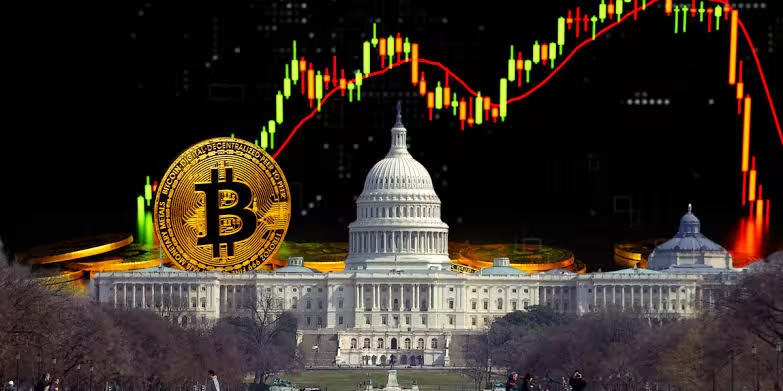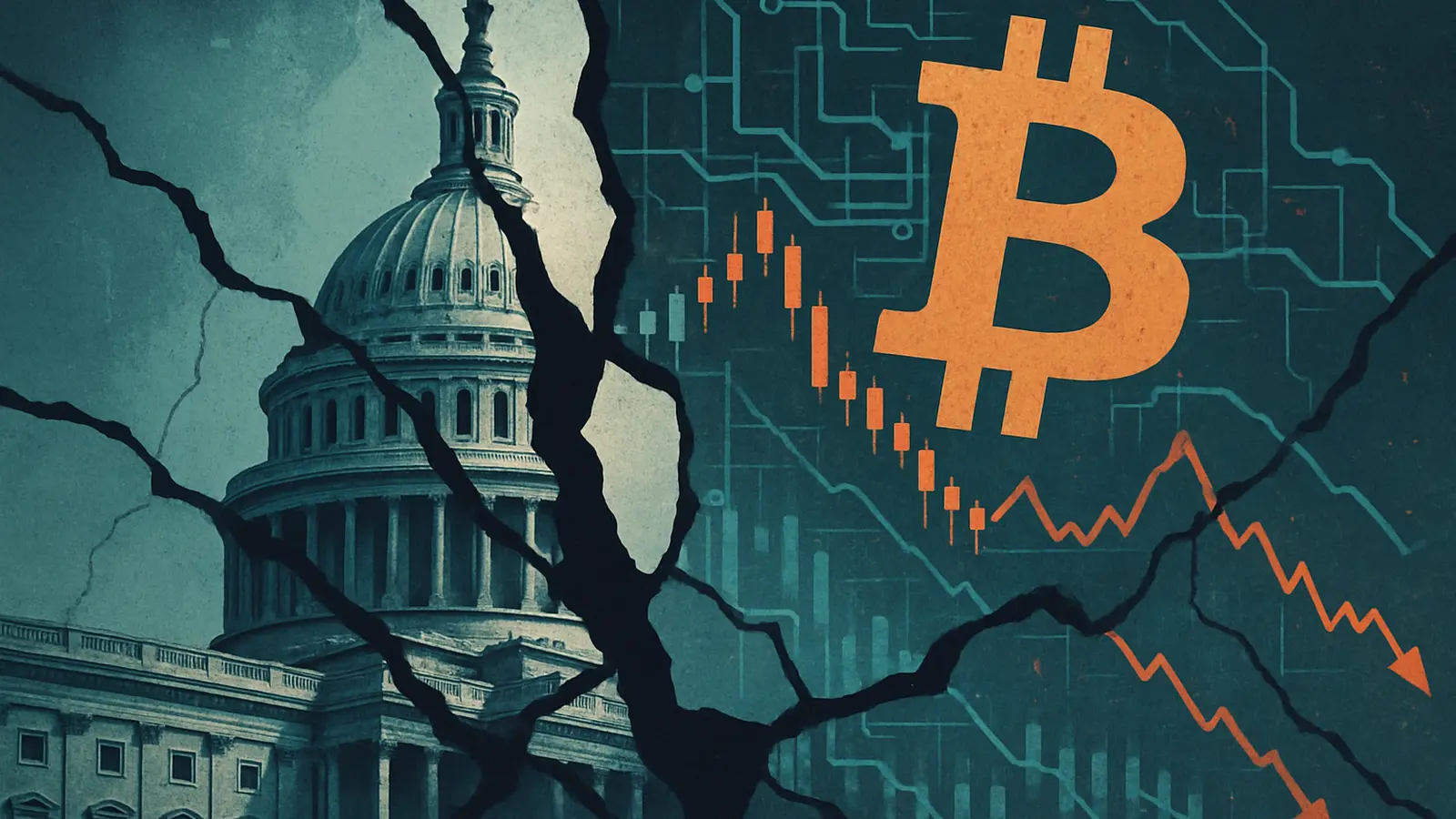6 Minutes
A shutdown looms as crypto markets watch closely
The U.S. federal government stands on the brink of a shutdown as partisan deadlock stalls budget approval. With lawmakers unable to resolve disputes over healthcare and other spending priorities, the likelihood of a funding lapse has risen sharply. For investors, founders, and crypto policy watchers, a shutdown introduces fresh uncertainty into an already volatile market environment.
Why the standoff matters for digital assets
A government shutdown does not automatically change blockchain fundamentals, but it does affect the macro environment that crypto markets respond to. When federal operations pause, several downstream effects can impact price discovery, regulatory progress, and investor sentiment. In short: the pause in government activity can translate to reduced data flow, delayed regulatory decisions, and added volatility for Bitcoin, Ethereum, and other cryptocurrencies.
Probability and political backdrop
As of late September, key Republican and Democratic leaders signaled a high probability of a shutdown. Voices from both sides—most prominently President Donald Trump and conservative Senator JD Vance—warned that a shutdown could begin on Oct. 1. Senate Minority Leader Chuck Schumer countered that the choice rests with House Republicans. This impasse has pushed short-term prediction markets and polling toward an expectation of a lapse in funding.
High probability markets and public statements increase the chance that the shutdown will occur, and that timing matters: a short funding gap has limited macro impact, while a longer closure can erode sentiment, interrupt services, and delay critical regulatory processes.
How past shutdowns affected the economy and markets
Historically, the economic consequences of shutdowns depend on duration and the underlying economic climate. The 2018–2019 shutdown—America’s longest at 35 days—affected roughly 800,000 federal employees, lowered consumer sentiment, and disrupted services. Consumer hesitancy to spend on nonessential goods was a clear signal of the shutdown’s drag on growth.
For markets, the broader macro reaction sometimes precedes the shutdown itself. In late 2018, Bitcoin had already fallen sharply before the funding lapse began, and then experienced partial retracement during and after the closure. That pattern illustrates how traders often price in uncertainty well ahead of formal government pauses.

Direct implications for crypto investors and markets
Below are the most tangible ways a shutdown could influence crypto trading, regulation, and product approvals.
1) Key economic data pauses: less visibility for traders
During a shutdown, many federal agencies stop nonessential operations, including some data releases. Employment figures, inflation measures, and other Federal Reserve inputs can be delayed or limited—reducing the data points traders use to time markets. The absence of monthly inflation or unemployment numbers can increase short-term volatility in crypto and equity markets, as participants trade with greater uncertainty about macro policy paths.
2) Crypto regulation and rulemaking face delays
A critical risk for the crypto industry is procedural: a shutdown can halt agency rulemaking. The SEC, Commodity Futures Trading Commission, and other bodies may suspend nonessential functions, which delays policy implementation and guidance. For crypto firms awaiting clarity around token classification, custody rules, or compliance frameworks, these delays increase legal and operational uncertainty.
SEC staff reductions or furloughs could slow or pause reviews of rule changes that affect token issuers, custodians, and exchanges. That stall can in turn dampen investment flow until regulatory clarity returns.
3) Spot crypto ETF approvals could be deferred
Spot crypto ETFs are a major catalyst for institutional adoption and market liquidity. The SEC’s capacity to process and review applications is essential for advancing new listings. If the agency curtails operations or postpones deliberations during a shutdown, approvals for spot Bitcoin and Ether ETFs could slip—delaying potential inflows that historically boost trading volumes and price momentum.
4) Legislative priorities—CLARITY Act and market structure bills
Key bills, such as the CLARITY Act—a market structure and regulatory certainty proposal designed to define rules for different types of crypto assets—were on the legislative calendar. A shutdown reduces the chance of these bills advancing before year-end. Lawmakers may need extended negotiating time to reintroduce or reconcile provisions, which pushes regulatory certainty further into the future.
What experts say
Commentators from traditional finance and crypto-focused outlets have highlighted two central concerns: the lack of economic data complicating interest-rate and policy bets, and concrete delays to regulatory progress. For example, market watchers note that the Federal Reserve relies on timely economic indicators to set policy; a data blackout could complicate rate-path forecasts and the timing of cuts—factors that directly affect risk assets, including crypto.
Jim Cramer and other pundits have warned that delayed economic reports create an environment of guesswork for traders, potentially amplifying short-term swings.
Practical takeaways for crypto stakeholders
- Traders should account for increased volatility around missing macro releases; risk management and position sizing become more important.
- Institutional investors eyeing spot ETF approvals or regulatory clarity should temper timelines—expect delays if agencies are furloughed.
- Crypto firms should prepare contingency plans for compliance activities and consider legal counsel to navigate paused regulatory interactions.
- Long-term builders should continue product and compliance development, as legislative and regulatory windows will reopen once funding resumes.
Will a shutdown derail crypto innovation?
A temporary funding gap is unlikely to permanently derail blockchain development. Startups, open-source communities, and private investors generally continue progress during political stand-offs. However, a protracted shutdown that stalls regulatory milestones and market infrastructure enhancements could slow adoption rates and postpone institutional inflows.
Final perspective
Government shutdowns create headwinds, particularly around regulatory timelines and macro transparency. For crypto markets—where sentiment and liquidity already drive rapid price movements—the absence of federal data, delayed SEC activity, and postponed legislation like the CLARITY Act are meaningful short-term risks. But unless the shutdown is prolonged, the core trajectory of crypto innovation and adoption will likely resume once funding and agency operations are restored.
Investors should remain vigilant, manage risk, and monitor SEC and congressional calendars for updates on rulemaking and legislative progress. The next few weeks will show whether this standoff becomes a brief disruption or an extended drag on regulatory and market momentum.
Source: crypto


Leave a Comment